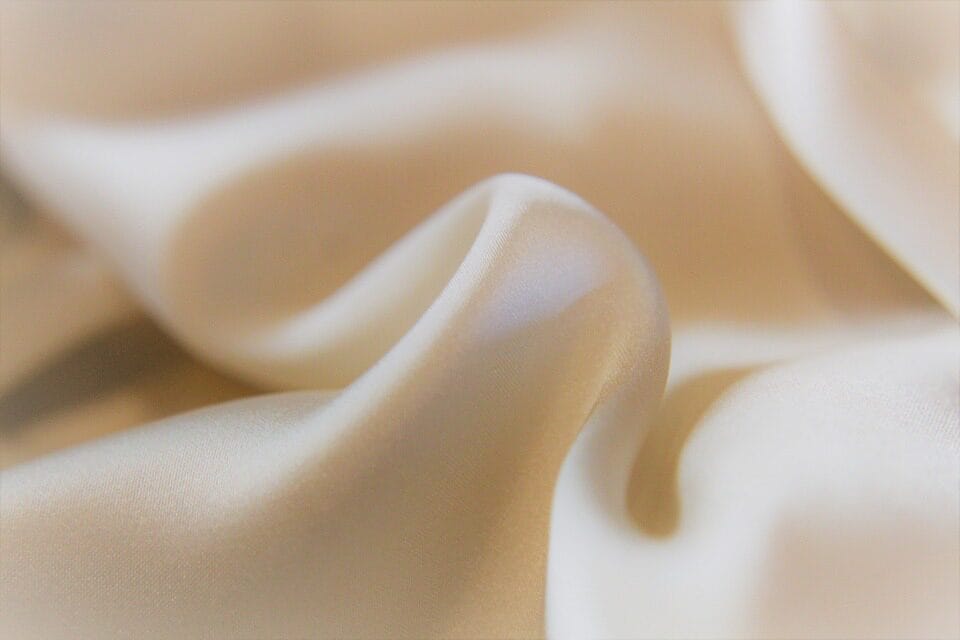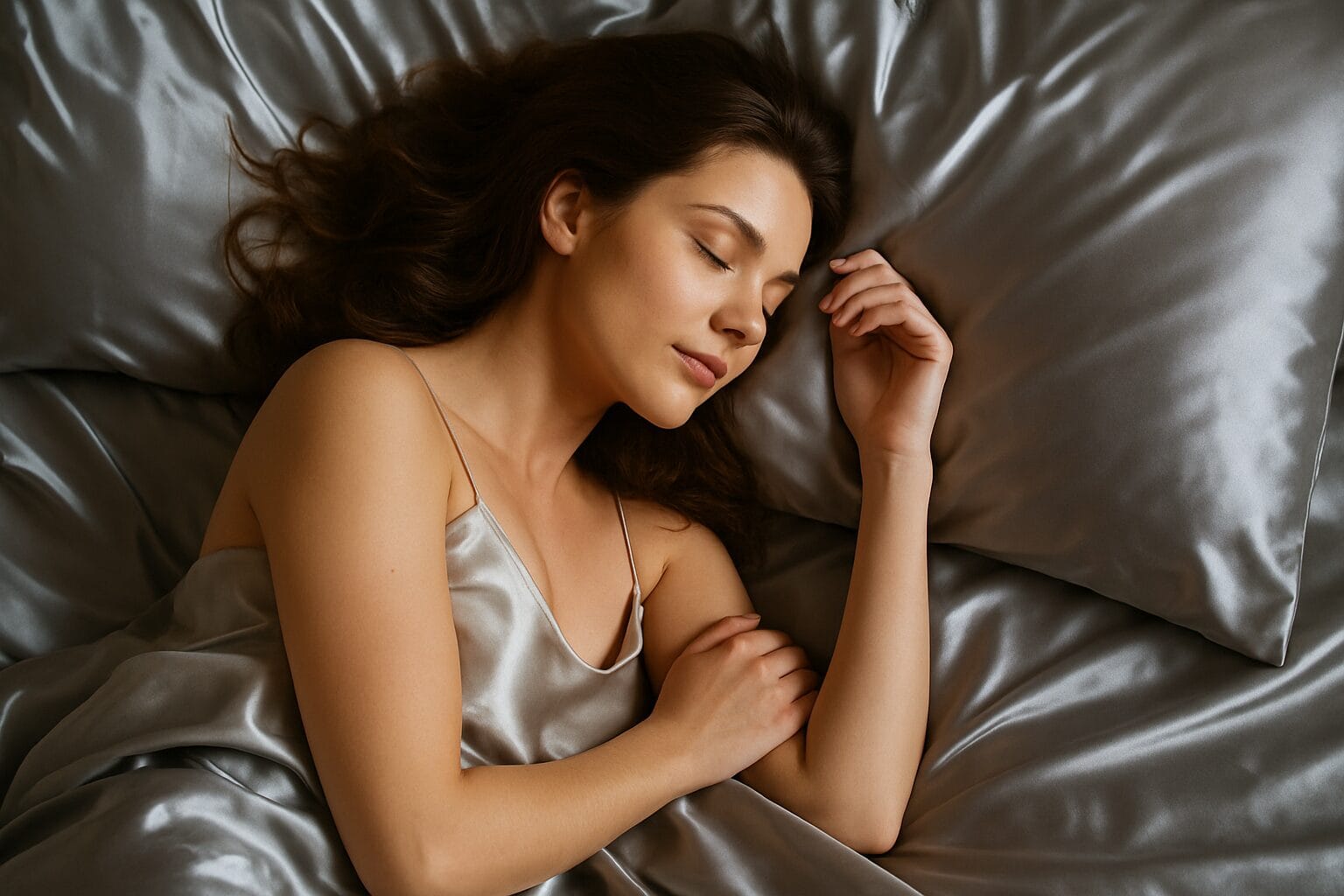Silk pillowcases are credited with a unique property - supposedly they can prevent premature aging of the skin. We checked whether this point of view is supported by scientific research.
This effect is expected to be written about manufacturers And sellers silk products, but in addition to them, the magical properties of this material promote lifestyle publications, women's magazines, news media Belarus, federal And regional Media in Russia, bloggers and commentators on Reddit. You can find something like this statement and in descriptions products for marketplaces - sometimes in such publications it says and about the similar effect of silk sleep masks.
Silk is one of the most ancient and exquisite types of fabrics in human history. Its production began in China during the Neolithic era - biomolecular analysis methods showthat silk objects were found in burials over 8,500 years old. The technology of making silk was carefully protected at the state level, and other cultures probably discovered the method of producing it themselves. For example, during archaeological excavations in Harappa (modern Pakistan), fragments of silk fabrics dating back to approximately 2450 BC were found. e. Silk clothes were also discovered on the famous Altai mummy - “Princess of Ukok” (III-V centuries BC). Analysis of the fabric showed that it was probably not from China, but from India. The Great Silk Road and the export of fabric outside of China arose only in 130 BC. e. Thus, silk produced in China began to reach other countries, including European ones.
Bed linen from silk threads began to be produced soon after the technique of making such fabric was mastered. To this day got there funeral sheets made of silk and baby diapers. With the advent of the silk trade for Europeans, such bed linen becomes a symbol of high social status. Today, silk bed linen is valued for its naturalness, comfort and elegance. At the same time, some manufacturers attribute healing properties to silk, in particular protection against premature aging of the skin.
Approvedthat the anti-aging effect of silk pillowcases is due to several reasons. Firstly, silk is a smoother material than cotton or synthetics, and therefore the skin of the face is less deformed during sleep. Secondly, silk absorbs less moisture, so it does not “dry out” the skin while you sleep. Thirdly, it protects against the growth of bacteria and dust mites in bedding. And finally, it has the same pH as the skin, which means there will be no aggressive interaction between the two.

To understand whether silk pillowcases can prevent premature age-related changes in the skin, it is worth explaining what causes these changes.
Reasons why facial skin changes over time it is customary to share to internal and external. Internal factors include genetics, as well as damage to cellular structures by free radicals and age-related hormonal changes in the body. It is almost impossible to radically delay or neutralize their influence. External causes include primarily ultraviolet radiation and an unhealthy lifestyle (smoking, drinking alcohol, poor diet, physical inactivity). These factors can be combated by using sunscreen and lifestyle changes.
Process Skin aging, namely its sequence and severity, depends on the interaction of internal and external factors and on what a person does to protect against aging. The main mechanisms of age-related skin changes are as follows:
- the body produces less collagen, elastin and hyaluronic acid, and the process of destruction of these substances accelerates, causing the skin to become less hydrated and more prone to wrinkles;
- under the influence of gravity and due to weakening of muscles, ptosis occurs - sagging of certain areas of the skin (for example, neck, cheeks);
- due to the thinning of the subcutaneous fat tissue, wrinkles form in the area of activity of the facial muscles, and due to the thinning of the volume of bone tissue, voids in the area of the cheeks and jaws;
- Due to exposure to ultraviolet radiation and changes in hormonal levels, skin color becomes less even, hyperpigmentation appears, and the capillary network appears.
Thus, the two main reasons for the appearance of wrinkles are a decrease in the content of certain substances in the skin and the thinning of subcutaneous fat. Both reasons are most likely internal, and the pillowcase material cannot influence them globally. First of all, wrinkles are formed in the areas of the most active facial expressions. When we laugh, frown or squint, the same muscles tense and creases form in the same places. In order for nighttime sleep to affect the skin no less than facial expressions, we must sleep in a fixed position, without the slightest movement.
Based on the first age-related changes, you can understand which areas of the face are most active. It can be assumed that posture preferences during sleep should also be reflected on the face. However, this hypothesis refuted scientists in 2013 - they assessed the severity of age-related changes on the right and left sides of women’s faces, depending on which side they prefer to sleep on. There was no statistical significance in the severity of wrinkles on the side that was supposed to be more “crushed” on the pillow. That is, whether there is smooth silk or rougher cotton under the face does not matter, since lying on a pillow, in principle, does not create excessive wrinkle formation.
However, how showed A study conducted by a group of South Korean scientists in 2012 showed that some pillowcases actually help fight age-related changes. True, they are by no means silk, but made from polyester with fibers impregnated with copper oxide. The fact is that copper regulates the secretion of extracellular skin proteins and can penetrate the body through intact skin. Volunteers aged 30–60 slept on either regular polyester pillowcases or copper-infused bedding for eight weeks. The condition of their skin and the severity of age-related changes were assessed by independent experts who did not know who slept on which pillowcases. In the groups using copper oxide pillowcases, the severity of crow's feet (crow's feet) and overall skin unevenness decreased significantly by the end of the study. However, what affected the skin was not how the face “crumpled” or “didn’t crumple,” but rather the skin’s ability to absorb copper.
At the same time, silk is really absorbs less moisture than cotton or linen. However, this can be both a plus and a minus. Manufacturers of silk pillowcases promise that thanks to these properties of the fabric, night creams and serums will nourish the skin all night long, and will not end up on the pillowcase. But first of all, everything funds skin care cosmetics manufacturers recommend apply within 15–30 minutes. before going to bed and do not lie on the pillow until they are absorbed. Secondly, a silk pillowcase is not selective, and it will absorb less not only cream, but also common skin sweat, which can make sleeping on it less comfortable. When it comes to breeding bacteria and other pathogens, silk has no advantage over other fabrics—in any case, a pillowcase necessary change once a week, regardless of the material.
Only one study (and with some limitations) showed an advantage of silk over cotton fabric in terms of reducing the absorption of skin care products. In 2004, Italian pediatricians studiedhow to help children with atopic dermatitis. With this disease, red spots appear on the skin and itching begins; there is a great danger of scratching the spots until they erode. The study involved 46 children; the average age of the subjects was two years. For atopic dermatitis, it is recommended to relieve the condition with moisturizers and emollients, so the scientists were important that clothing did not remove too much cream from the skin. In the group wearing silk clothing, skin condition in covered areas improved significantly compared to children wearing cotton clothing. Scientists have concluded that silk clothing can be an additional means of making life easier for people with this pathology.
There is also no scientific research on how the pH of silk affects the skin. In 2009, the British Advertising Standards Authority studied campaign for the promotion of silk pillowcases and identified five main statements:
- Cotton and polyester are the main cause of skin aging;
- silk has the same pH as skin and hair;
- protects against bed ticks;
- has hypoallergenic properties;
- Helps maintain moisture levels in the skin.
The pillowcase manufacturer had to scientifically prove the veracity of each of these claims in order to continue using them in advertising. However, there were no supporting scientific facts for any of them. The regulator made a decision on the inadmissibility of using such statements in the advertising campaign of both this manufacturer and any others.

Dermatologist Malvina Cunningham confirmsthat silk pillowcases, unfortunately, do not have any unique beauty effect. She explains that the quality of sleep affects the condition of the skin much more than bedding. A person who has slept poorly with heavy eyelids, swollen eyes and circles under them will always look older than a well-rested person. In addition, lack of sleep reduces the production of collagen and hyaluronic acid - important substances for youthful skin. “Although silk pillowcases do not prevent wrinkles, they may indirectly help your skin look better if you subjectively enjoy lying on silk more and sleep better,” the doctor concludes.
Thus, scientific research cannot yet confirm any benefits of silk pillowcases as an element of anti-aging care. Age-related skin changes are associated with a number of internal and external factors, but bedding fabric is not one of them. The only real difference is that silk absorbs less of nighttime skin care products. At the same time, cosmetics manufacturers point out that it must be applied within 15–30 minutes. before bedtime, and if you follow these instructions, then silk will not have any benefits. Doctors note that the quality of sleep has a much greater influence on the condition of the skin than the material of the bed linen.
Cover image: DALL-E
Read on the topic:
- Is it true that beef fat is healthier than face creams?
- Is it true that face fitness is effective against external signs of facial skin aging?
- Cuprum. Which fabrics are eco-friendly and which are not?
- Naked Science. Mollusks learned to create “silk” thanks to a gene from bacteria
- N+1. Three-thousand-year-old silk remains discovered in Sanxingdui
If you find a spelling or grammatical error, please let us know by highlighting the error text and clicking Ctrl+Enter.






